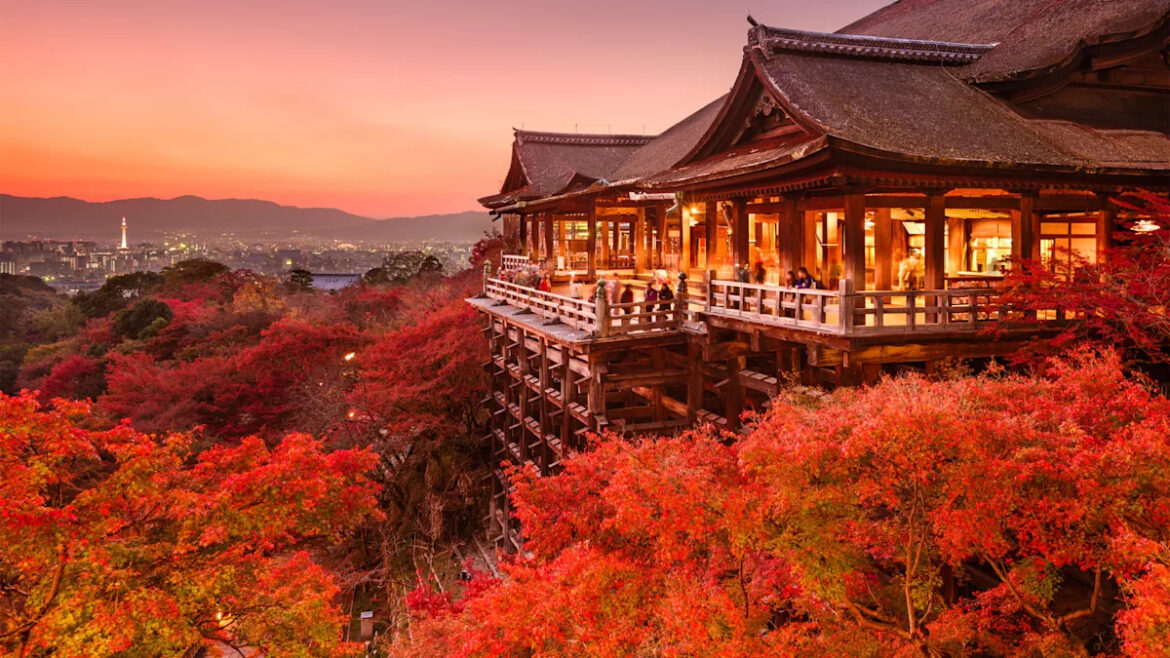Japan’s Ministry of Internal Affairs and Communications has granted final approval for Kyoto to implement the nation’s highest-ever accommodation tax, authorizing the historic capital to charge guests up to 10,000 yen ($67) per person per night starting March 1, 2026, a tenfold increase from the current maximum levy.
The approval, granted on October 3, removes the last bureaucratic hurdle after Kyoto’s city assembly endorsed the proposal in March 2025. The new tiered tax structure represents the first increase since Kyoto’s accommodation tax was introduced in October 2018 and comes as the city grapples with unprecedented tourism levels.
The New Tax Structure
The progressive tax system is based on the nightly price of accommodation per person:
Under 6,000 yen ($40): Tax remains at 200 yen ($1.32)
6,000 to 20,000 yen ($40-$133): Tax increases from 200 yen to 400 yen ($2.66)
20,000 to 50,000 yen ($133-$332): Tax increases from 500 yen to 1,000 yen ($6.64)
50,000 to 100,000 yen ($332-$665): Tax jumps from 1,000 yen to 4,000 yen ($26.58)
100,000 yen and above ($665+): Tax skyrockets from 1,000 yen to 10,000 yen ($67)
The new tax applies per person, per night, meaning a luxury hotel room with double occupancy could face a $134 nightly tax, in addition to the standard 10% consumption tax and typical 10% service charge that many hotels add.
The Overtourism Crisis
Kyoto’s tourism boom has reached staggering levels. The city welcomed 10.88 million foreign tourists in 2024, along with 56 million domestic tourists. This surge follows Japan’s record-breaking 36.9 million international visitors in 2024, a 15.6% increase from its previous 2019 record.
The influx has strained local infrastructure significantly. Kyoto city officials have cited overcrowded municipal buses, congested streets, long lines at popular attractions, and mounting pressure on historic sites as primary concerns. In their submission to the ministry, officials insisted that “tourists also must bear the cost of countermeasures against overtourism.”
Revenue and Spending Plans
Kyoto’s accommodation tax revenue is projected to more than double, from 5.2 billion yen ($34.5 million) this fiscal year to approximately 12.6 billion yen ($83.6 million) annually once the new rates take effect.
The city plans to use the additional funding to introduce measures aimed at easing infrastructure strain and improving visitor experience, including expanding multilingual information services, launching etiquette campaigns, and creating a new express bus linking Kyoto Station with the Higashiyama district.
Will It Actually Curb Tourism?
While Kyoto officials frame the tax increase as an overtourism countermeasure, experts and industry observers express skepticism about its effectiveness in reducing visitor numbers.
“In practice, these taxes are rarely meant to discourage travel, they are designed to reinvest in the very things that make cities attractive: cultural preservation, public transport, cleanliness, and better visitor management,” Nicholas Smith, Holidays Digital Director at Thomas Cook, told Euronews Travel.
The tax structure also raises several practical concerns:
The Day-Trip Loophole: The accommodation tax only affects overnight visitors, potentially encouraging more travelers to base themselves in nearby cities like Osaka, just 15-25 minutes away by train, and make day trips to Kyoto. This could actually worsen crowding at popular sites during peak hours without generating any tax revenue for the city.
Impact on Domestic Tourism: The tax applies equally to Japanese citizens visiting from other parts of the country, not just international tourists. With Japan’s weakened yen already reducing domestic purchasing power, this additional burden could discourage Japanese travelers from staying overnight in Kyoto, potentially shifting more tourism pressure to neighboring destinations.
Neighboring Cities Under Strain: Budget-conscious visitors may choose to stay in smaller nearby cities, which could strain their infrastructures as they struggle to accommodate increased visitor numbers without Kyoto’s resources or tourism management experience.
A Growing Trend
Kyoto is not alone in implementing tourism levies. Other Japanese destinations are following suit, with Mount Fuji and Hokkaido planning to introduce their own tourist taxes. Okinawa has also adopted new accommodation taxes in response to record tourist arrivals.
The trend extends beyond Japan. Cities like Venice and Barcelona have implemented similar measures to manage overtourism, while Bhutan charges a $100 per night fee for international visitors, and Rwanda’s Volcanoes National Park charges $1,500 for one hour with mountain gorillas.
Bottom Line
Kyoto’s dramatic tax increase sends a clear message: the city is taking overtourism seriously and expects visitors to contribute to preservation and infrastructure costs. However, whether it will actually reduce tourist numbers or simply redistribute them remains an open question.
The tiered structure ensures budget travelers won’t be priced out, while luxury visitors shoulder the bulk of the burden. But with the tax affecting Japanese tourists as much as international ones, and the potential for visitors to simply stay elsewhere and day-trip, the policy may generate much-needed revenue without solving the underlying problem of too many people crowding into Kyoto’s temples, gardens, and historic streets at the same time.
As the world watches Kyoto’s experiment, one thing is certain: the ancient capital’s struggle to balance cultural preservation with economic benefits from tourism has become a cautionary tale for popular destinations worldwide.


AloJapan.com